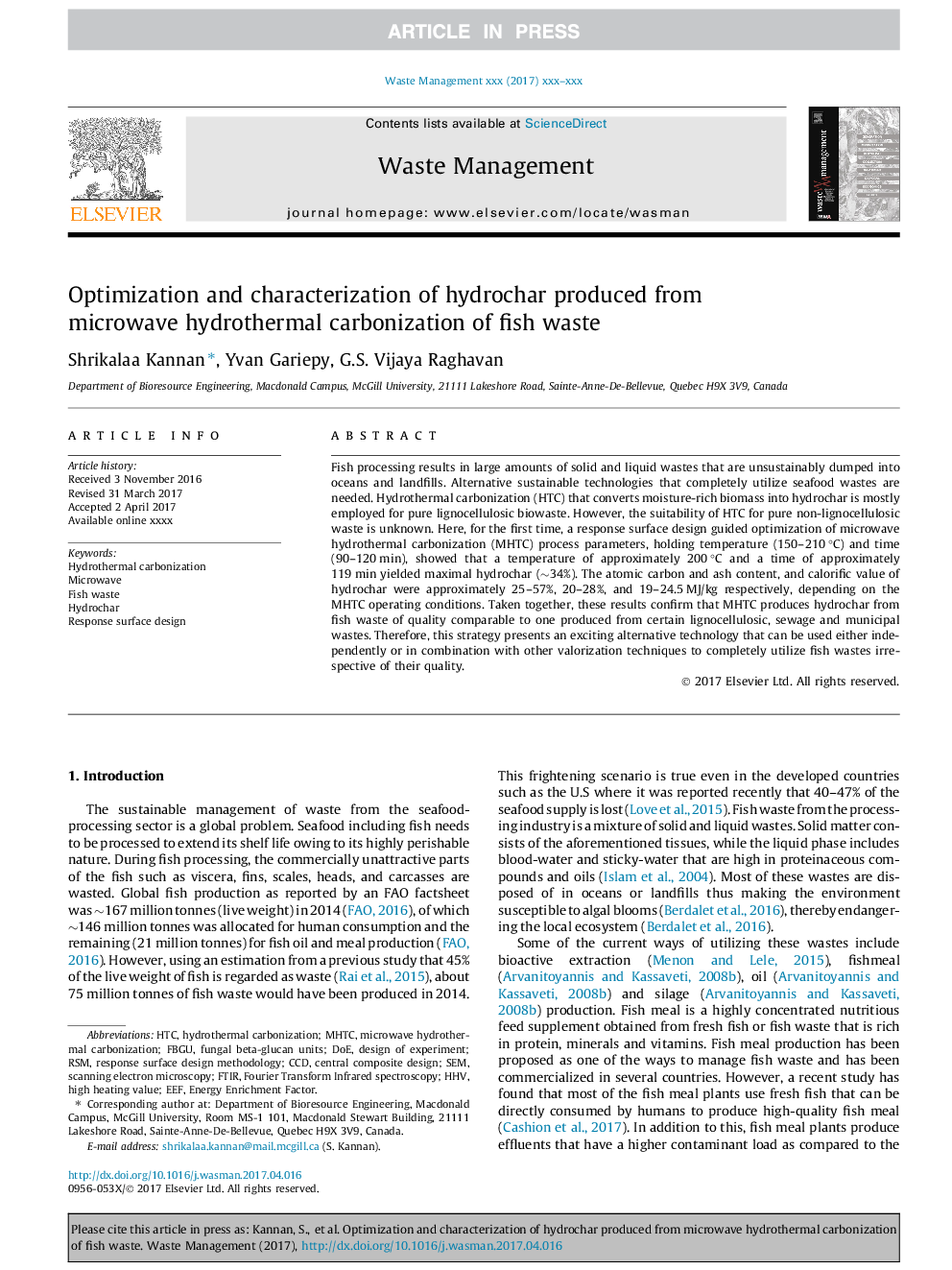| Article ID | Journal | Published Year | Pages | File Type |
|---|---|---|---|---|
| 5757139 | Waste Management | 2017 | 10 Pages |
Abstract
Fish processing results in large amounts of solid and liquid wastes that are unsustainably dumped into oceans and landfills. Alternative sustainable technologies that completely utilize seafood wastes are needed. Hydrothermal carbonization (HTC) that converts moisture-rich biomass into hydrochar is mostly employed for pure lignocellulosic biowaste. However, the suitability of HTC for pure non-lignocellulosic waste is unknown. Here, for the first time, a response surface design guided optimization of microwave hydrothermal carbonization (MHTC) process parameters, holding temperature (150-210 °C) and time (90-120 min), showed that a temperature of approximately 200 °C and a time of approximately 119 min yielded maximal hydrochar (â¼34%). The atomic carbon and ash content, and calorific value of hydrochar were approximately 25-57%, 20-28%, and 19-24.5 MJ/kg respectively, depending on the MHTC operating conditions. Taken together, these results confirm that MHTC produces hydrochar from fish waste of quality comparable to one produced from certain lignocellulosic, sewage and municipal wastes. Therefore, this strategy presents an exciting alternative technology that can be used either independently or in combination with other valorization techniques to completely utilize fish wastes irrespective of their quality.
Keywords
Related Topics
Physical Sciences and Engineering
Earth and Planetary Sciences
Geotechnical Engineering and Engineering Geology
Authors
Shrikalaa Kannan, Yvan Gariepy, G.S. Vijaya Raghavan,
